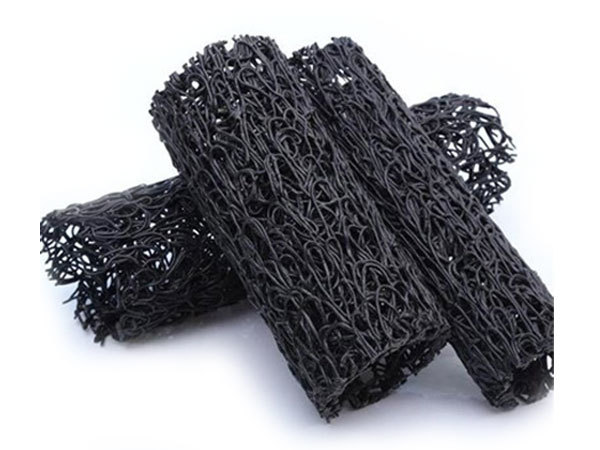PRODUCTS SERIES
3d Composite Drainage Net
In the railroad, highway and other transportation infrastructure, the safety and service life of the project is inseparably related to its own drainage system, of which geosynthetic materials are an important part of the drainage system.
Keywords:
Category:
Drainage network

Email:1071173371@qq.com
3d Composite Drainage Net
Detail

Product introduction
In the railroad, highway and other transportation infrastructure, the safety and service life of the project is inseparably related to its own drainage system, of which geosynthetic materials are an important part of the drainage system. The three-dimensional drainage network in the drainage network is a new type of geosynthetic material. The structure is a three-dimensional geonet core with needle-punched perforated non-woven geotextiles glued on both sides. The three-dimensional geomesh core consists of a thick vertical rib, and one diagonally placed rib at the top and one at the bottom. It is able to drain groundwater from the road quickly and has a pore maintenance system of its own that blocks capillary water under high loads. It also acts as a barrier and foundation reinforcement. A new type of geosynthetic material
Product characteristics
1、When the load is 720kPa and the gradient is 2%, the permeability is 2500m/d and the flow rate is 13pm/m.
2、The creep test retains more than 60% of the thickness after bearing 1200kPa load for 10000 hours.
3, three-ribbed drainage network core carbon black content of not less than 2%, density 0.94g/cm3, tensile strength of not less than 36.5kN/m, melt index 1.0 g/10min, thickness 7.6mm.
4, non-woven geotextile apparent pore size 0.18mm, water permeability 0.26 Sec-1, permeability 0.2cm/sec, puncture strength 580N, trapezoidal tear strength 356 N, grip tensile strength 900 N, grip ductility 50%, burst strength 2750kPa.
Role characteristics
1、Layed between the foundation and the substrate, used to drain the water between the foundation and the substrate, block capillary water and
effectively combined into the edge of the drainage system. This structure automatically shortens the drainage pathway of the foundation, and the drainage time is greatly reduced, and the amount of selected foundation materials used can be reduced (i.e., materials with more fines and lower permeability can be used). The service life of the road can be extended.
2, in the sub-base laying drainage network can prevent the sub-base fines into the sub-base (that is, play a role of isolation). Aggregate subgrade will enter the upper part of the geonet to a limited extent. In this way, the composite geotechnical drainage network also has a potential role in limiting the lateral movement of the aggregate subgrade, and in this way it acts similarly to the reinforcing effect of a geogrid. Generally speaking, the tensile strength and rigidity of composite geotechnical drainage network is better than many geogrids used for foundation reinforcement, and this limiting effect will improve the support capacity of the foundation.
3、After the road ages and cracks are formed, most of the rainwater will enter the cross section. In this case, drainage mesh is laid directly under the road surface in place of drainable foundations. The drainage network can collect the water first before it enters the foundation/subgrade. And a membrane can be wrapped around the bottom end of the drainage network to further prevent water from entering the foundation. For rigid road systems, this structure allows the road to be designed with a higher drainage coefficient Cd. Another advantage of this structure is the potential for more uniform hydration of the concrete (research on the extent of this advantage is ongoing). Whether for rigid or flexible road systems, this structure is able to extend the life of the road. 4. In northern climates, the laying of drainage networks can help mitigate the effects of frost heave. If the frost depth is deep, geonet can be laid at a shallow location in the subgrade to act as a capillary action blockage. It is also often necessary to replace the subgrade with a granular subgrade that is less susceptible to frost heave, extending down to the frost depth. Frost-swellable backfill can be filled directly on top of the drainage network up to the foundation ground line. In this case, the system can be connected to a drainage outlet so that the water table is at or below this depth. This potentially limits the development of ice crystals and eliminates the need to restrict traffic loads during spring ice thaw in cold regions
Technical specifications
| Item | Indicators | |
| Geotechnical drainage network | Geotechnical composite drainage network | |
| Density/(g/cm³) | ≥0.939 | |
| Carbon black content/% | 2~3 | |
| Longitudinal tensile strength/(kN/m) | ≥8.0 | 16.0 |
| Longitudinal guide water rate (normal load 500 kPa, hydraulic gradient 0.1)/(m²/s) | ≥3.0×10-) | ≥3.0×10-1 |
| Peel strength/(kN/m) | ≥0.17 | |
| Geotextile mass per unit area/(g/m²) | ≥200 | |
| Note: The technical index of geotextile should conform to the provisions of GB/T17639. | ||
Previous
none
Next
Online consultation







